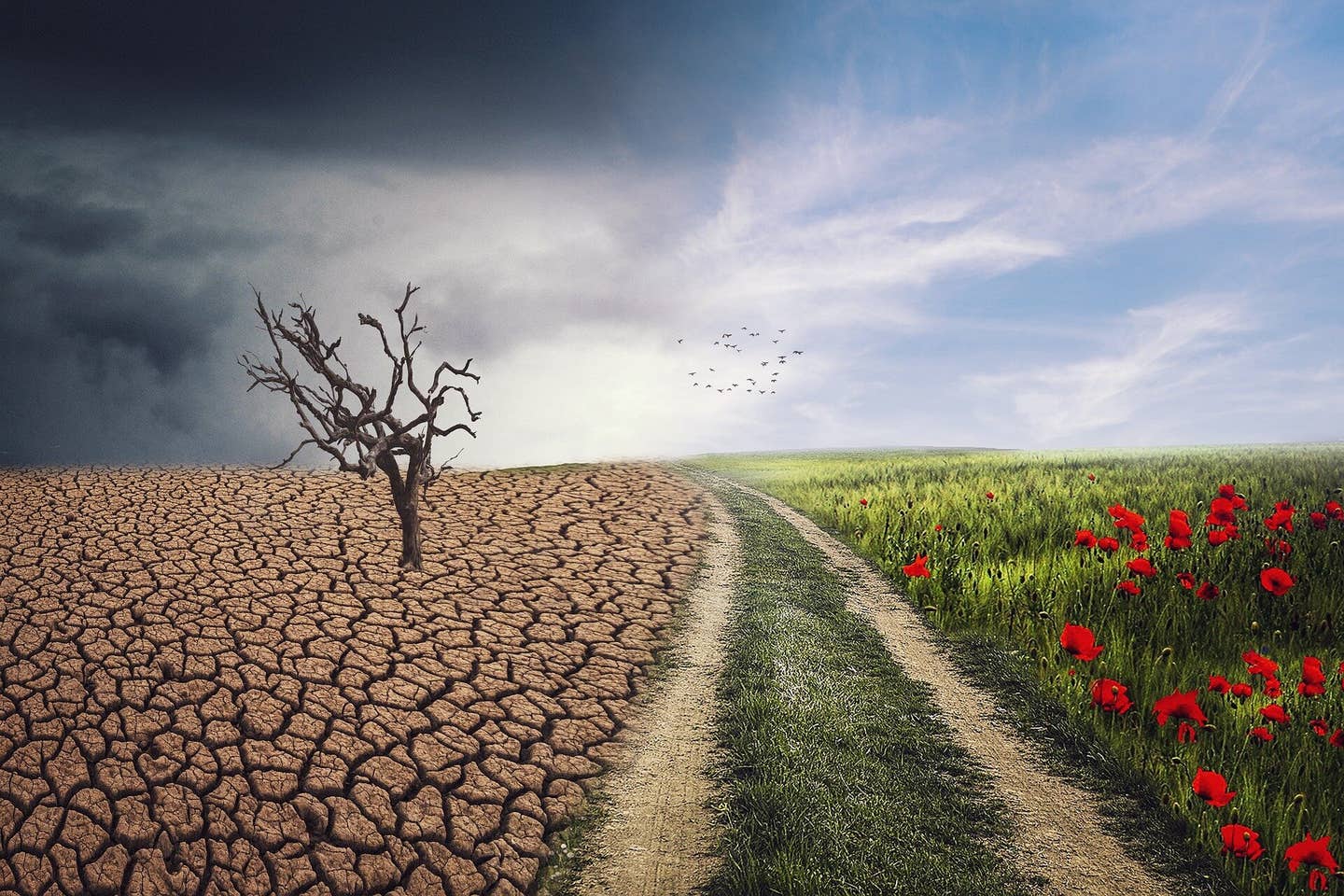Earth’s atmosphere is getting thirstier—and that spells trouble
Atmospheric thirst is making droughts 40% more severe worldwide, even where rainfall remains steady.

A new global study finds droughts have become 40% more severe due to rising atmospheric evaporative demand, even without rainfall drops. (CREDIT: Pixabay)
Hot air holds more moisture than cold air. That simple truth, while familiar to anyone who’s used a blow dryer or walked outside after a humid shower, is driving a hidden shift in how droughts behave. A recent global study, published in Nature, now confirms that the atmosphere’s growing thirst for water is sharply increasing drought severity—even in places where rainfall hasn’t changed much.
This overlooked force is known as atmospheric evaporative demand, or AED. It acts like an invisible sponge in the sky, pulling moisture from soils, rivers, and plants at faster rates than before. As the planet heats up, AED is increasing—and with it, so is the intensity, frequency, and reach of droughts worldwide.
The drying power of a warming atmosphere
It’s easy to blame droughts on a lack of rain. But rainfall is only half the story. Droughts occur when water supply from precipitation can’t meet the atmosphere’s demand for moisture. That demand is now growing faster than supply.
Chris Funk, director of the Climate Hazards Center at UC Santa Barbara and co-author of the study, explained it clearly: “Drought is based on the difference between water supply (from precipitation) and atmospheric water demand. Including the latter reveals substantial increases in drought as the atmosphere warms.”
The study looked at drought patterns from 1901 to 2022 using high-resolution global datasets. It found that AED has made droughts 40% more severe worldwide on average. During the last five years alone, land areas in drought expanded by 74% compared to 1981–2017. AED was responsible for 58% of that expansion.
And 2022 set a grim record—30% of all land experienced moderate to extreme drought. Almost half of this drying, 42%, was linked directly to the rising AED.
Related Stories
Tracking drought with better data
Lead author Solomon Gebrechorkos, a hydro-climatologist at the University of Oxford, and his international team wanted to find out exactly how thirsty the atmosphere has become. To do this, they created an ensemble of global drought datasets using some of the most accurate climate measurements available.
“There’s no direct way to measure how ‘thirsty’ the atmosphere is over time,” Gebrechorkos said. “So, we used high-resolution climate data, identified through a comprehensive global evaluation, and applied the most advanced models for atmospheric evaporative demand—models that account for multiple climate variables, not just temperature.”
The team used the Penman–Monteith model to calculate AED. Unlike simple models that rely only on temperature, this method also considers radiation, wind speed, and humidity—factors that affect how quickly water evaporates. They combined this with the Standardized Precipitation Evapotranspiration Index, or SPEI, a drought index that compares rainfall and AED across different regions and time periods.
This approach allowed researchers to assess both wet and dry regions under the same framework and to track changes in drought intensity over many timescales, from months to decades.
More drought, even without less rain
One striking result of the study was that AED is increasing faster than global rainfall. That means even areas with stable or slightly rising rainfall can still experience worsening droughts, simply because the atmosphere is pulling moisture out of the landscape faster than it can be replaced.
Funk called this finding “very concerning, but perhaps not terribly surprising.” He added, “Most of us are familiar with how air temperatures are increasing rapidly, but most people may not realize the connections between this warming and the desiccating influence of the atmosphere.”
Just a small rise in temperature can make a big difference. In hot areas, even a few degrees can cause the atmosphere to draw much more water from crops, forests, and rangelands. Over time, this process dries out the land, damages ecosystems, and weakens food security.
Far-reaching consequences
Water plays a central role in everything from growing food to supporting economies and ecosystems. When water becomes scarce, the impacts ripple outward. Crops fail. Livestock die. Rivers shrink. And forests become tinderboxes.
With climate change, scientists expect droughts to become more frequent and intense. This raises the stakes for everyone, from farmers and firefighters to policymakers and families.
AED doesn’t just dry out soil. It reduces how much carbon plants can absorb, weakens biodiversity, and harms long-term ecosystem health. It also worsens the effects of wildfires by drying out vegetation more quickly.
For farmers, the rising AED means they may need to change how they work the land. Micro-irrigation systems, better soil treatments, and weather-adaptive crop choices are just a few tools that might help manage future drought risks.
“To counter increasing drought trends, we need to anticipate and manage the extreme events that lead to concerning increases in drought risk,” said Funk.
Reducing uncertainties and preparing for the future
Earlier research into global drought trends faced challenges. Many studies used inconsistent methods or relied on limited datasets, leading to conflicting results. Some overestimated AED in wetter climates by using simple temperature-based models. Others ignored the effects of AED altogether.
The new study reduces those uncertainties by using better data and more accurate models. It also demonstrates how AED and precipitation interact to influence drought outcomes around the world.
The team found that models like Penman–Monteith, which include both heat and moisture variables, provide better results across different seasons and regions. And unlike some older drought indices, SPEI doesn’t require a calibration period, which improves its ability to track long-term trends.
The study shows that measuring drought by rainfall alone is no longer enough. Understanding the atmosphere’s role—its growing thirst—is crucial for planning and resilience.
Looking ahead
This research confirms what many had feared: the world is not just getting warmer, it’s also getting drier in ways that aren’t always obvious. AED is now a major driver of drought, and its influence will likely grow as temperatures continue to rise.
The findings call for stronger early-warning systems and more targeted drought planning. Understanding AED can help predict future droughts more accurately and shape better responses.
Cities, farmers, and governments must start adapting to a world where the air itself pulls water from the ground. Knowing what the atmosphere demands will be just as important as knowing how much rain is expected.
As Gebrechorkos said, this work “offers a more comprehensive perspective on this critical issue.” And that perspective will be vital for facing the challenges ahead.
Note: The article above provided above by The Brighter Side of News.
Like these kind of feel good stories? Get The Brighter Side of News' newsletter.



